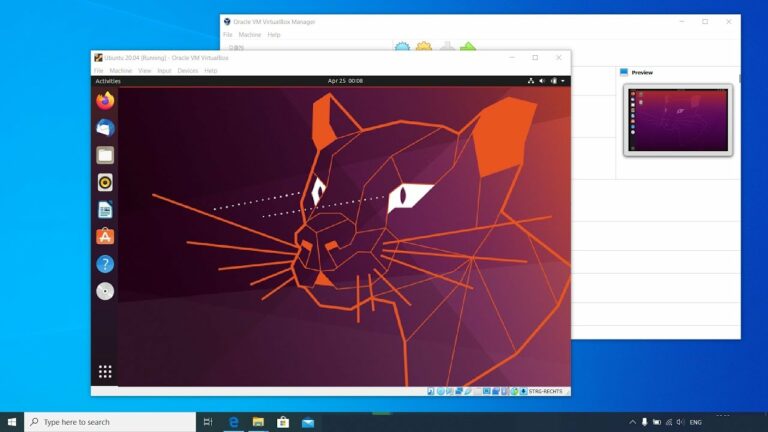Monitoring the system and log analysis are essential factors to ensure smooth and efficient operation of Linux systems. With the increasing reliance on computer systems in all areas of life, there is a growing need for more monitoring and analysis to ensure security and performance. In this guide, we will discuss how to use different tools to monitor the system in Linux and analyze logs, which will help you identify potential problems and improve system performance.
By understanding how to effectively monitor systems and analyze logs, administrators and engineers can improve system responsiveness and reduce downtime. We will cover a range of tools used for monitoring system performance, as well as how to process logs to understand events occurring on a Linux system. These skills are essential for anyone seeking to enhance their knowledge of system management and improve its performance.
Prepare yourself with the tools and knowledge needed to effectively monitor Linux systems and detect any issues that may arise. Let’s begin exploring this important topic.
The Importance of Monitoring the System in Linux
Monitoring the system is a necessary process to ensure that operations are carried out smoothly without interruption. Modern computer systems, especially Linux servers, require continuous monitoring to ensure optimal performance and detect any issues before they worsen.
1. Enhancing Security
System monitoring helps identify unwanted or suspicious activities, including unauthorized access attempts. By analyzing logs, you can detect security threats such as cyberattacks and develop strategies to respond to them before they cause damage. Security is an integral part of any effective system management, and it should always be a priority.
2. Improving Performance
System monitoring tools also help measure system performance over time and identify periods of performance slowdown. By analyzing performance-related logs, administrators can make informed decisions based on analytical data to improve the system’s performance in the end. Identifying resource-consuming processes can also help enhance overall system performance.
3. Easing Maintenance
Good monitoring can help speed up maintenance processes. When issues are identified early, steps can be taken to fix them and improve performance without the need to shut down the system for extended periods. The information provided by monitoring tools can also make maintenance processes more streamlined and precise.
Monitoring Tools in Linux
There are many tools available for monitoring systems in Linux, ranging from basic interactive tools to integrated monitoring systems. In this section, we will review some of the common tools and how to use them:
1. TOP and HTOP
TOP and HTOP are essential tools for real-time system performance monitoring. These tools display CPU and random access memory usage for each process on the system.
To use the TOP tool, open a terminal and enter the command:
top
This will display a list of all active processes and show you the current system usage. You can press the q key to exit the application.
Meanwhile, HTOP is an enhanced version of TOP, offering a more user-friendly graphical interface and allowing you to interact more easily with processes. To install these two tools on an Ubuntu system, you can use the command:
sudo apt install htop
2. Netstat
Netstat is a main tool for monitoring network connections. It can be used to view active connections on the system, including open ports and protocols used. To use Netstat, you can type:
netstat -tuln
This will show you a list of all connections and open ports, allowing you to identify unexpected applications using network resources.
3. vmstat
vmstat is a tool used to monitor virtual memory. It displays information about memory, process management, and input/output activity. You can use:
vmstat 1
To view updates every second. This can give you an idea of how the system responds and its load over time.
Analyzing Logs in Linux
After setting up system monitoring, the next step is log analysis. Most systems record all activities, which helps administrators discover problems and address them. However, we need to understand how to effectively analyze this data.
1. Logs Location
Logs are usually located in the /var/log directory. For example, system logs are stored in:
/var/log/syslog
While kernel logs may be found in:
/var/log/kern.log
And Apache error logs are stored in:
/var/log/apache2/error.log
2. Using grep to Analyze Logs
You can use the grep command to extract specific information from logs. For instance, if you want to search for certain events in the system log, you can type:
grep 'error' /var/log/syslog
This will display all lines containing the word ‘error’. This can help narrow down investigations when a specific issue occurs.
3. Using journald
In modern Linux distributions, you can use journald as the main log monitoring tool. You can view logs using the command:
journalctl
To view the latest log messages, use:
journalctl -xe
This shows you the most important events and current system errors.
Error Checking and Troubleshooting Procedures
After monitoring the system and analyzing logs, you may encounter issues that require investigation and resolution. In this section, we will look at how to do this effectively.
1. Identifying Resource-Consuming Processes
It is important to identify processes that are consuming resources abnormally. You can use tools such as TOP or HTOP to identify high-usage processes. Afterward, you can consider stopping those processes using:
kill -9
where is the process ID you want to terminate.
2. Checking Logs for Errors
After identifying the process, check the associated logs for any error messages or warnings. A thorough examination of logs can help understand what happened and prevent future issues.
3. Using Advanced Monitoring Tools
Sometimes you may need to use advanced monitoring tools like Nagios or Zabbix. These tools allow for more detailed monitoring and can alert you immediately when any problems occur. Nagios monitors performance and provides customizable reports according to your needs.
System monitoring and log analysis are fundamental parts of system management in Linux. By understanding how to effectively use monitoring tools and analyze logs, you can improve your system’s performance, enhance security, and ensure smooth operation. We have covered multiple tools, including TOP and HTOP, Netstat, and vmstat, as well as how to analyze logs using grep and journald.
In the end, monitoring and log analysis skills are essential for any IT professional, as they provide the necessary tools to understand your system’s performance and interact with it effectively. Make sure to review the available tools for you and continuously test them to ensure the smooth and transparent operation of your Linux systems.




